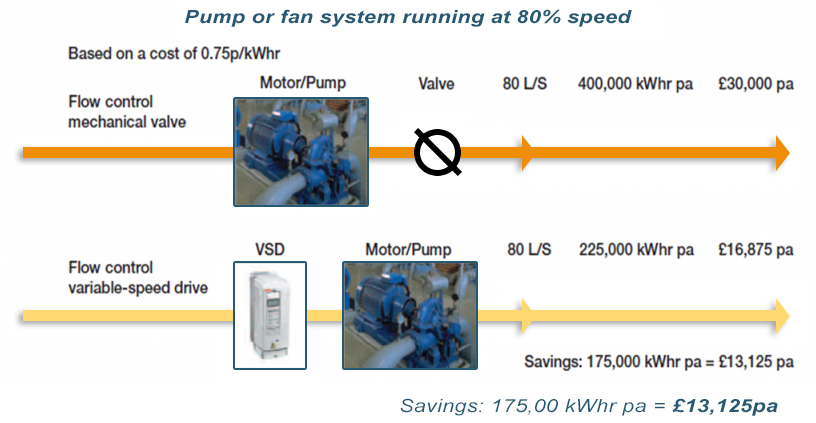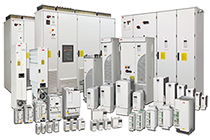Steve Topham, Project Manager at Halcyon Drives writes:
The benefits of selecting energy saving products mean different things to different people.
Financially, the capital cost of the equipment needs to be offset against the savings presented by the new equipment. However, to the engineer the benefits are more practical, such as reduced maintenance, greater degree of control, and easier system interrogation when things go wrong.
The greatest savings are to be made in applications utilising centrifugal fans and pumps, known as “Variable Torque” loads. The affinity laws governing these types of load state that the power needed to run a fan or similar device is equal to the cube of the motor speed. Therefore, for a 10% reduction in speed, typically the power requirement will be reduced by 27%.
In a fixed speed application, this saving is significant, but even greater savings can be achieved when a closed loop control system is employed. In this situation the motor speed is varied to maintain a reference value, such as pressure, flow or level control.
Typical applications for variable speed drives are cooling towers, water circulation, dust extraction, etc.
Variable Speed Drives are equally at home in process applications as diverse as extruders, conveyors, crushers or printing. In these applications the savings are not as significant, as “Constant Torque” loads are governed by a linear characteristic where speed and energy are directly proportional. However, there are other benefits in these applications such as greater levels of control, communication, longevity of the equipment, and reduced maintenance.
It is the case with all variable speed drive installations that the motor needs to be checked to ensure that it has a sufficient insulation class to deal with the voltage waveform of the variable speed drive. If this is not the case, or if the motor has already been repaired or rewound, it is unlikely that it will survive the application of a variable speed drive.
In the event that a new or replacement motor is required, the most energy efficient solution is the new SynRM motor recently launched by ABB. This range of motors present energy savings in accordance with IE4, but must be used with an appropriate variable speed drive. The capital cost of this type of motor is no different to a conventional synchronous motor, but the extra efficiency presented will make a significant difference to the lifetime ownership cost.
Whilst the capital cost of any equipment is how most installations are valued, a better assessment would be to evaluate the “Cost of Ownership”. This is the sum of the Purchase cost, the running cost, and the cost of not running.
The running cost can be reduced in various ways as described above, whilst the cost of not running can be limited by selecting products that require less maintenance or down time.
Contact us for advice on energy savings or an energy audit of your site.

